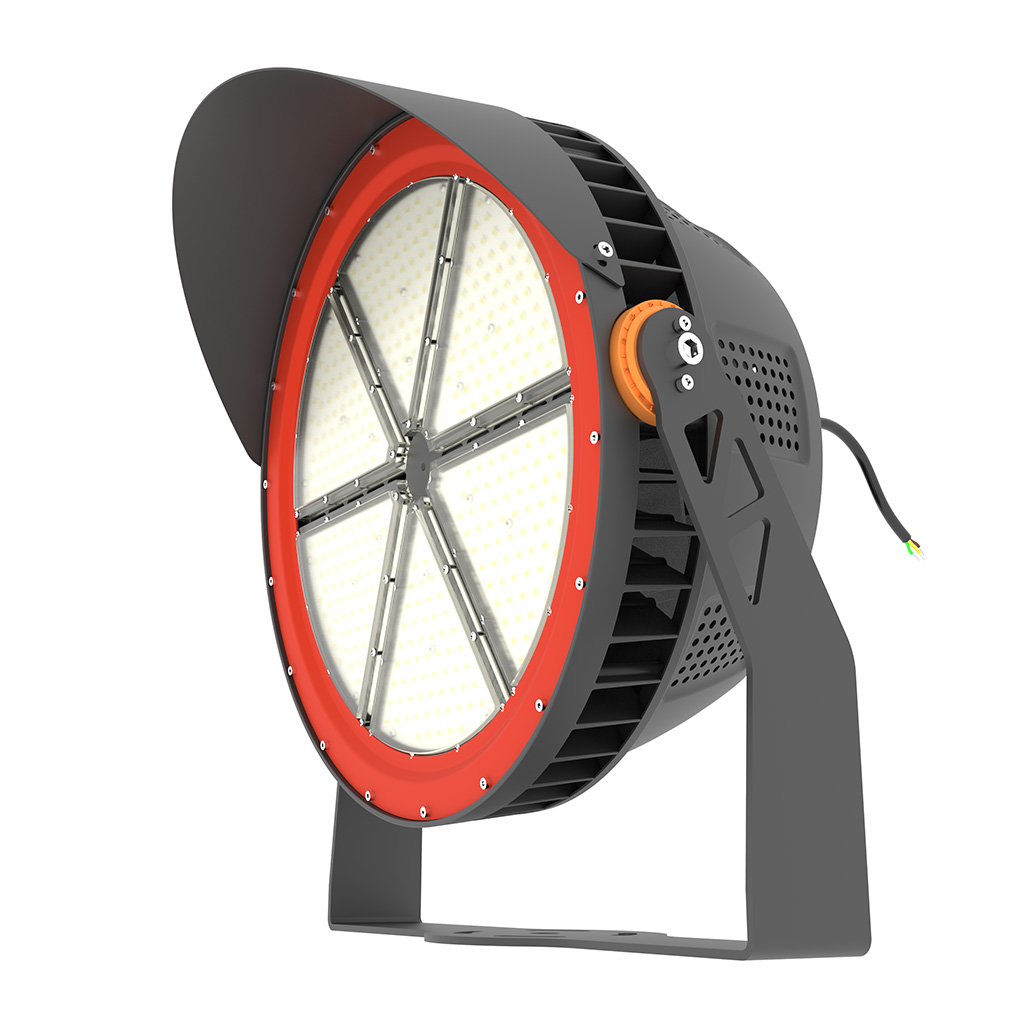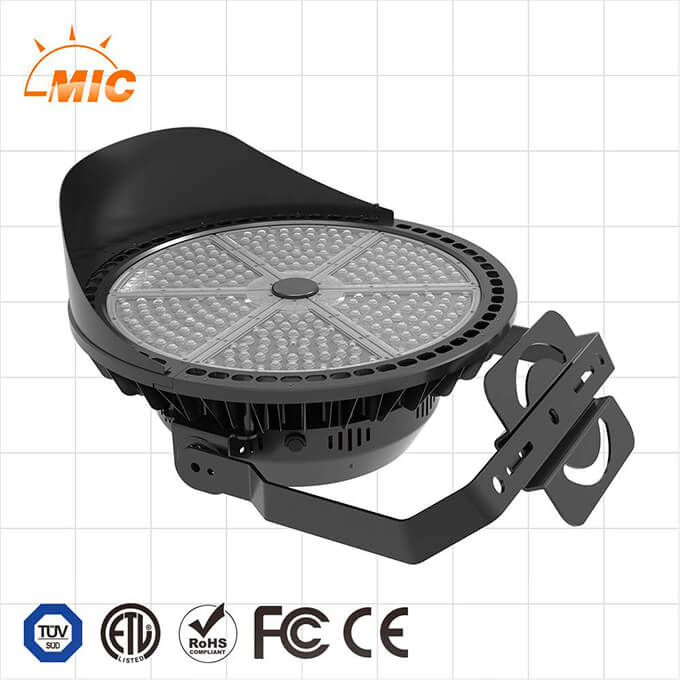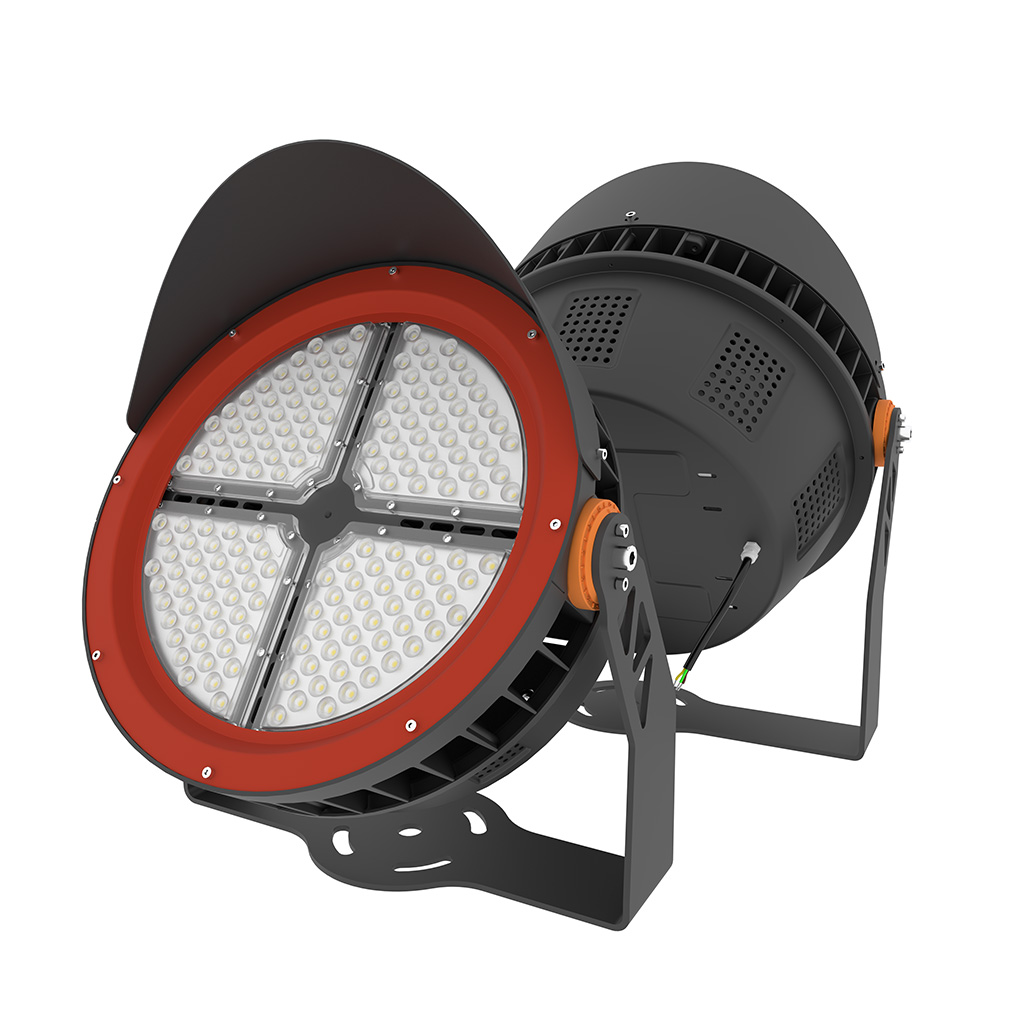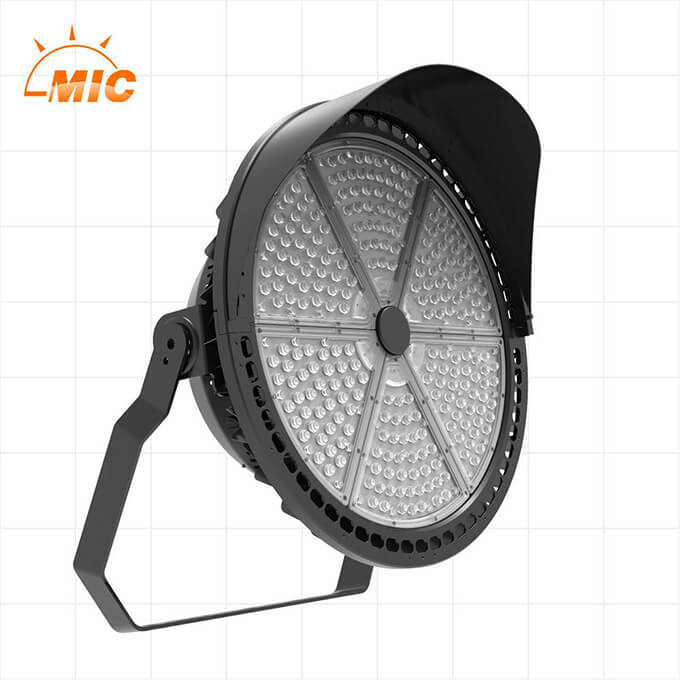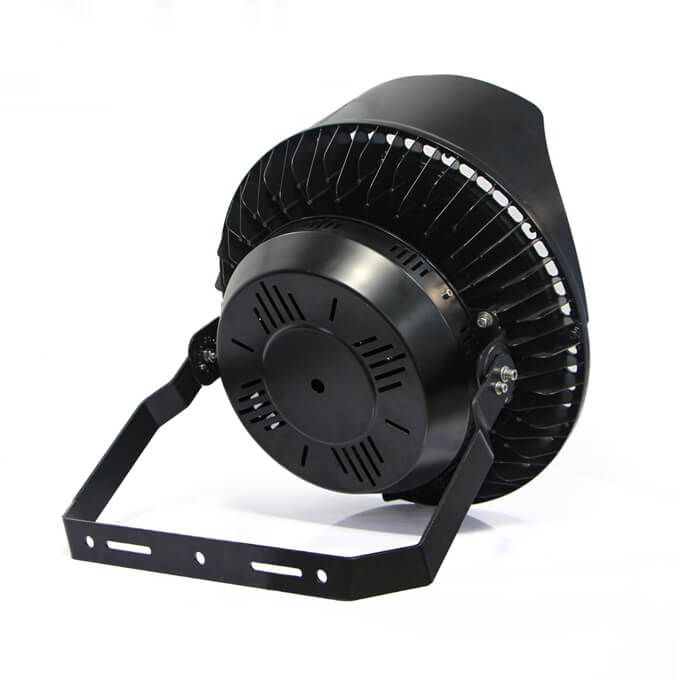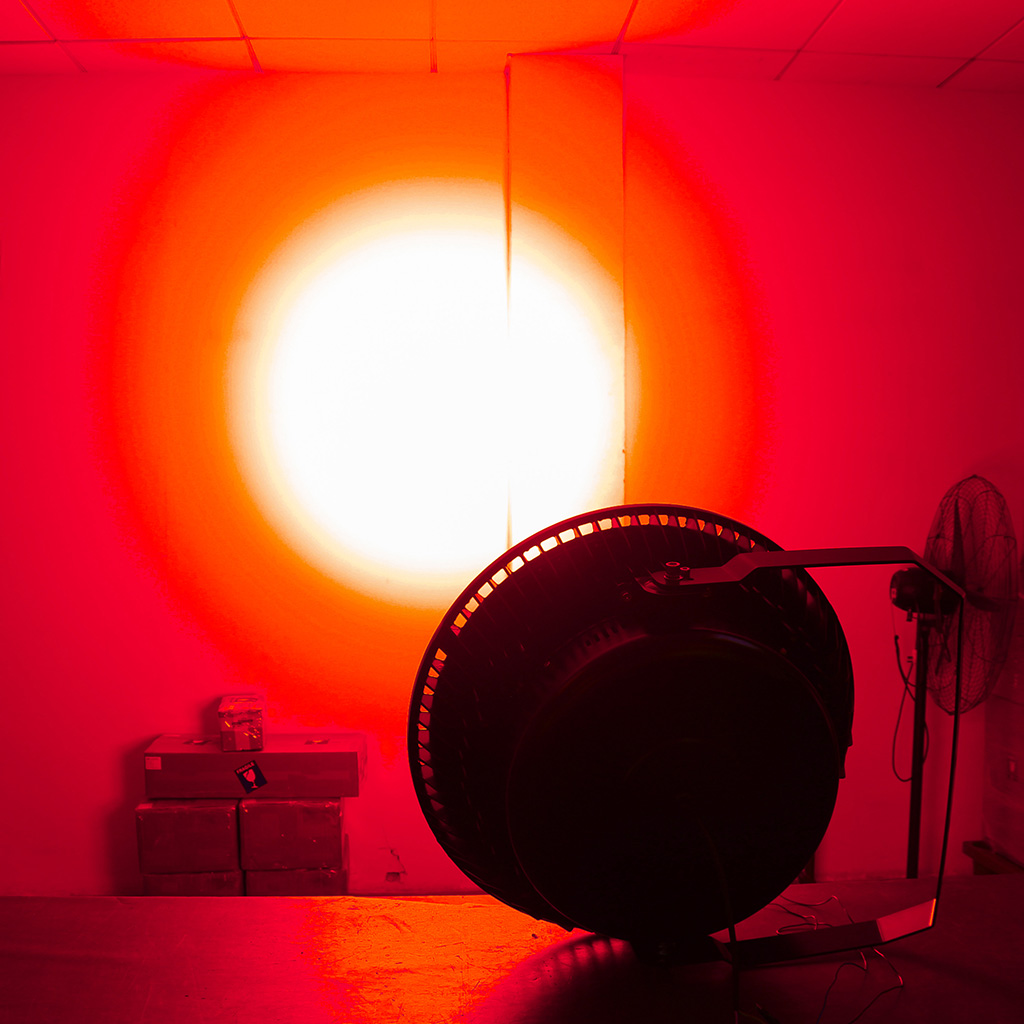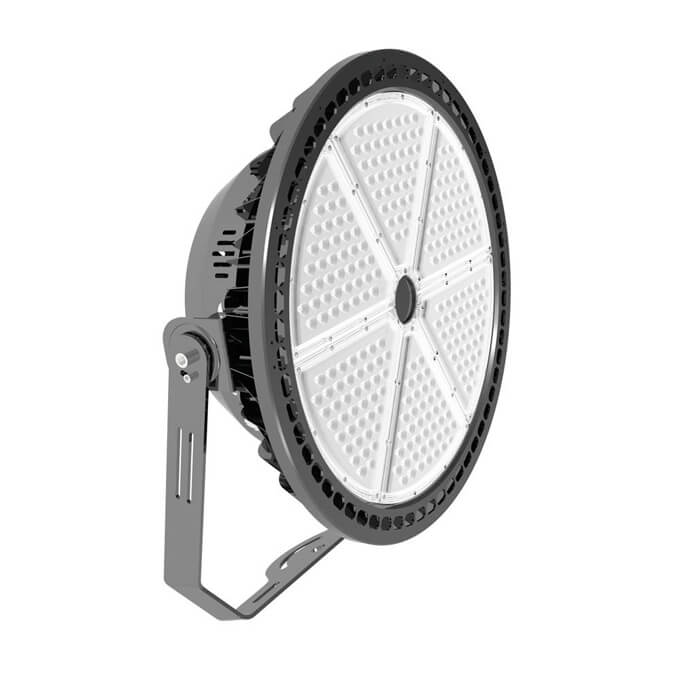Introducción a la luz de inundación led R
Shenzhen MIC Optoelectronics Co., Ltd. was founded in 2005 and is located in Longgang District, Shenzhen, Guangdong. Since the LED company is among the leader in the industry, thus it specializes in high-power LED indoor and outdoor lighting including the R Series Flood Light. It is a leading integrated operation service company in the field of LED optoelectronics, focusing on the research and development of LED lighting products, Production, and sales. The company also has standard product production lines, self-support import and export rights, and professional management.
Also, they have research and development, manufacturing, and marketing teams, with more than hundreds of employees. They manufacturer different Products such as high-power LED street lights, LED solar street lights, LED high bay lights, LED tunnel lights, LED tubes, LED bulbs, LED spotlights, LED track lights, LED engineering lights LED ceiling lights and other high-power LED indoor and outdoor lighting fixtures and LED solar products, which have the advantages of energy-saving, environmental protection, and long service life, are widely used in lighting, traffic indication and urban lighting and other fields.
The company has also passed ISO9001 international quality system certification and ISO14001 international environmental management system certification. It has UL, TUV, CE, ROHS, FCC, and other international testing and certification reports for various products.
Survive by quality, and develop by innovation. Shenzhen Chuangqi Optoelectronics insists on technological innovation for development, adhering to the tenet of "Serving customers wholeheartedly", providing customers with high-quality products and perfect after-sales service. Therefore, the company is willing to cooperate with new and old customers and develop together sincerely.
Lugares aplicables
Los reflectores LED de la serie R se utilizan principalmente en edificios individuales, iluminación de paredes exteriores de edificios históricos, iluminación interior y exterior de edificios, iluminación de paisajes verdes, iluminación de vallas publicitarias y otras instalaciones especiales de iluminación, bares, estadios, estadios, plazas, estaciones de tren, barcos, obras de construcción, grúas torre y otros tipos de iluminación.
| N º de Modelo. |
MFL-R500 |
MFL-R600 |
MFL-R800 |
| Consumo De Energía |
Luz de inundación 500W |
Luz de inundación 650W |
Luz de inundación 800W |
| NW / Tamaño |
19 kg / 652 * 565 * 206 mm |
21 kg / 652 * 565 * 206 mm |
23 kg / 652 * 565 * 206 mm |
| Flujo luminoso |
> 65000LM |
> 78000LM |
> 104000 |
| Embalaje |
682 * 612 * 245 mm, 1 pieza / CTN |
| Ángulo de haz |
15/35 ° |
Grado del IP |
IP65 |
| CCT |
2700-6500K |
Tasa de FP |
> 0,95 |
| eficacia luminosa |
> 130lm / W |
CRI |
> 80 |
| Esperanza de vida |
50000h |
Garantía |
5 años |
Características del producto:
1: The R series flood light shell adopts integrated die-cast aluminum heat dissipation, the main body is round, and the back is composed of a power supply and a main body bracket.
2: Shell structure: Due to the use of die-casting process, the entire lamp does not have too many joints, plus a waterproof seal, the waterproof level of the lamp is IP65, and there is a breathing hole design, which can discharge the mist inside the lamp when it is wet .
3: Functional characteristics: Our R series flood light has a narrow angle (15/30/60), concentrated light, and can be equipped with a hood. The power can be 1500W-2000W, and it can be used for special applications such as marine search and rescue lights. .
Comparación de reflector LED y alumbrado público tradicional (lámpara de sodio de alta presión)
* El consumo de energía de los proyectores LED y el consumo de energía de las farolas LED son iguales a la misma potencia. A continuación se citan los datos de comparación del consumo de energía de las farolas LED.
With the widespread use of high-power LEDs in lighting decoration and lighting, power-type LED drivers become more and more important. It will be possible to use high-power LED lighting for road lighting. Road lighting is the lamp with the longest use time and the most power consumption. The use of LED lamps in street lamps will greatly reduce the shortage of electricity in cities and save national energy. There are many domestic LED lamp manufacturers, and the performance of their products varies greatly. Here only take the LED flood light produced by our company as an example. Contrast with traditional flood light (high pressure sodium lamp).
Below we will comment on the performance and economy of LED street lamps and traditional street lamps.
Comparación del rendimiento de la puesta en marcha
The LED flood light starts instantly, while it takes more than 10 minutes for the high-pressure sodium lamp to start to reach normal brightness. During this time, the high-pressure sodium lamp consumes a lot of power, while the LED flood light consumes normal power.
Through the control circuit (such as Hangzhou Zhonggang Digital), the input voltage of the LED flood light can be between 90 volts and 265 volts without affecting the LED lights. The high-pressure sodium lamp cannot start when the input voltage is less than 185V, and the power increases by 12% when the input voltage exceeds 245V. In this way, high-pressure sodium lamps have higher requirements for power supply lines. The LED has no effect.
Comparación de reproducción cromática
The color rendering of high-pressure sodium lamps can only reach 20 to 30, while LED floodlights can reach more than 85. Compared with traditional lamp lighting, the driver can better recognize obstacles in the road and the surrounding environment of the road, and reduce the occurrence of traffic accidents.
The level of color rendering directly reflects the scotopic difference (S/P) of human eyes to light. Therefore, the luminous flux emitted by the high pressure sodium lamp must be multiplied by a correction value (0.64) to be the light perceived by the human eye strength. The luminous flux emitted by the LED lamp must be multiplied by a correction value (1.60) to be the intensity perceived by the human eye.
Rango de temperatura de color
The color temperature range of high-pressure sodium lamps is 2000 to 2500, while the color temperature range of LED street lamps is 2700k to 9000k. If the color temperature is low, it gives people a warm feeling in winter, but it gives people a hot feeling in summer. If the color temperature is high, it will give people a cold feeling in winter and a cool feeling in summer.
Generally, people spend more time in the evening in the summer, but less time in the evening in winter. There is more hot weather than cold weather in the year. Therefore, it is better to use white light with a high color temperature for road lighting.
Decadencia luminosa
The luminous decay of LED floodlights has a lot to do with the radiators of LED lamps. Some manufacturers do better. For example, our company adopts the technology of "Multilayer Compound Heat Dissipation System" independently developed and obtained the national invention patent. The radiator is independently developed and molded, and the developed radiator makes it fit well with the lamp piece to achieve the best heat dissipation effect.
According to the current data, its light decay is less than 3% in 10,000 hours! The light decay of the high-pressure sodium lamp is generally greater than 25% in 2000 hours.
Comparación de la eficiencia de la lámpara
The power efficiency of our company's LED floodlights can reach 88%. While the efficiency of high-pressure sodium lamps can only reach 70%. For example, the power consumption of a 120-watt LED flood light is 138 watts, while that of a 120-watt high-pressure sodium lamp is 156 watts.
Comparación de la protección del medio ambiente
LED flood light does not contain mercury, no ultraviolet radiation, and its low working temperature effectively reduces heat emissions.
Since it saves electricity, therefore, it saves coal for power generation and uses less coal for power generation. Thus, saving carbon dioxide emissions! The high-pressure sodium lamp contains mercury and ultraviolet radiation. In addition, it emits a lot of heat, consumes electricity, wastes coal, and emits a lot of carbon dioxide when working!
Also, the LED power factor is greater than 0.99, and the power factor of the high-pressure sodium lamp is about 0.44. In this way, the pollution of the LED to the power grid is very small, and the pollution of the high-pressure sodium lamp to the power grid is great! LED lamps have no stroboscopic and light pollution, while high-pressure sodium lamps have obvious stroboscopic and light pollution.
Utilización eficaz de la luz
Effective light utilization Rate Due to the characteristics of LED light source similar to point light source, it emits directional light to the illuminated object. There is basically no waste of light, so it has a very high light utilization rate, which can reach more than 92%. However, because the high pressure sodium lamp emits on all sides, part of the light is blocked by the light source itself and has a large luminous point. It is difficult to make optical design, and the efficiency of the lamp is not high, and the output.
The light spot will not overlap with the required effective illuminating surface and waste part of the light source. Therefore, it is projected to the surface of the illuminated object through the reflector of the lamp, and part of the light will be lost in the middle. Therefore, the effective light utilization rate of traditional lamps is 55~60%.
Introducción detallada:
ventaja
- Sus propias características: luz unidireccional, sin difusión de luz, lo que garantiza la eficiencia de la luz.
- La farola LED tiene un diseño óptico secundario único. Eso irradia la luz de la farola LED al área que debe iluminarse y mejora aún más la eficiencia de la luz para lograr el propósito de ahorro de energía.
- El LED ha alcanzado los 130-170lm / W, y todavía queda mucho margen de desarrollo, con un valor teórico de 360lm / W. La eficiencia luminosa de las lámparas de sodio de alta presión aumenta con el aumento de potencia. Por lo tanto, la eficiencia luminosa general de las farolas LED es mayor que la de las lámparas de sodio de alta presión;
- La reproducción del color de la luz de las farolas LED es mucho mayor que la de las lámparas de sodio de alta presión. El índice de reproducción cromática de las lámparas de sodio de alta presión es solo de aproximadamente 23, mientras que el índice de reproducción cromática de las farolas LED está por encima de 75. Desde la perspectiva de la psicología visual, es posible lograr el mismo brillo. Es más de un 20% más bajo que la lámpara de sodio de alta presión.
- La caída de la luz es pequeña, la caída de la luz en un año es inferior al 3% y aún cumple con los requisitos de la carretera después de 10 años de uso, mientras que la lámpara de sodio de alta presión tiene una gran caída, que se ha reducido en más de 30 años. % en aproximadamente un año. Por lo tanto, el diseño de la potencia de la farola LED puede ser más bajo que las lámparas de sodio de alta presión.
Ventajas adicionales
- La farola LED tiene un dispositivo de ahorro de energía de control automático, que puede lograr la mayor reducción posible de energía y ahorro de energía bajo la condición de cumplir con los requisitos de iluminación en diferentes momentos. Puede realizar atenuación por computadora, control de período de tiempo, control de luz, control de temperatura, inspección automática y otras funciones humanizadas.
- Larga vida: se puede utilizar durante más de 50.000 horas y proporciona una garantía de calidad de tres años. La desventaja es que no se puede garantizar la vida útil de la fuente de alimentación.
- Alta eficiencia luminosa: con chips ≥100LM, puede ahorrar más del 75% de energía en comparación con las lámparas de sodio de alta presión tradicionales.
- Fácil instalación: no es necesario agregar cables enterrados, sin rectificadores, etc., conecte directamente al poste de la lámpara o coloque la fuente de luz en la carcasa de la lámpara original.
- Excelente control de disipación de calor: la temperatura en verano se controla por debajo de 45 grados, y se adopta la disipación de calor pasiva, y la disipación de calor en verano es insuficiente.
- Calidad confiable: todas las fuentes de alimentación del circuito utilizan componentes de alta calidad, y cada LED tiene protección individual contra sobrecorriente, por lo que no hay necesidad de preocuparse por daños.
- Color de luz uniforme: no es necesario agregar lentes. Y no se compromete el color de luz uniforme para mejorar el brillo, a fin de garantizar un color de luz uniforme sin apertura.
- El LED no contiene mercurio metálico nocivo y no dañará el medio ambiente cuando se deseche.
Combining the above principles, the energy saving effect is remarkable, and it can save more than 60% of electricity instead of high pressure sodium lamps.
Low maintenance cost: Compared with traditional street lamps, the maintenance cost of LED street lamps is extremely low. After comparison, all input costs can be recovered in less than 6 years.
Desventaja
- Un solo LED tiene poca potencia. Necesita múltiples conexiones en paralelo para obtener alta potencia,
- Baja reproducción cromática. El color que se muestra bajo la iluminación LED no es tan verdadero como el de una lámpara incandescente. Esto debe analizarse a partir de la distribución espectral, que es un problema técnico.
- Punto de luz. Debido a los defectos en el proceso de fabricación del LED blanco en sí y al error de coincidencia con la copa o lente reflectante, es fácil causar el problema del "círculo amarillo".
- Problema de uniformidad de iluminación LED. Si no se realiza el diseño óptico secundario. La iluminación del LED está relativamente concentrada. Por lo tanto, el diseño óptico secundario debe realizarse para que el mapa de distribución de la intensidad de la luz parezca un murciélago.
- La caída de la luz del LED. En comparación con los LED de baja potencia, las farolas LED de alta potencia tienen una caída de luz mucho mejor. Sin embargo, los LED de baja potencia emiten muy poco calor. La disipación de calor no puede resolver el LED de alta potencia. Por lo tanto, el brillo disminuye significativamente después del calentamiento, por lo que no puede aumentar la potencia.
Requisito de habilidades:
The technology is becoming more and more mature, and the efficiency of the light source has reached more than 100lm/W, which makes the energy-saving transformation of urban street lighting possible. LED street lamps, especially high-power LED street lamps, are impacting the traditional street lamp market at a rapid pace.
As the name implies, high-power LED street lights are street lights with a power greater than 30 watts and using a new type of LED semiconductor light source. The standard is generally the uniformity of road illuminance, in line with road illuminance. (The actual 1/2 center spot reaches 25LUX, the 1/4 center light intensity reaches 15LUX, the lowest light intensity at 16 meters is 4LUX, and the overlap light intensity is about 6LUX. It refers to the LED street light that uses solar silicon panels as the power supply.
estándar
- La tasa de conversión de la luz es del 17% (la energía solar por metro cuadrado es de 1000 W y la eficiencia de utilización real es de 170 W)
- El material de la lente de la farola en el mercado es un material óptico mejorado, con una transmitancia de ≥93%, una resistencia a la temperatura de -38 a +90 grados y una tasa de anti-UV y amarilleo de 30.000 horas sin cambios.
- Farola LED, utilizada principalmente para la lente de farola LED, el punto es rectangular, el material es material óptico PMMA, la transmitancia es ≥93%, la resistencia a la temperatura es -38- + 90 grados y el amarilleo anti-UV la tasa no cambia durante 30.000 horas. Esperar,
- La iluminancia media de uniformidad de la iluminancia de la superficie de la carretera es 0,48 y la relación de puntos es 1: 2.
- Conoce la iluminancia de la carretera. (El punto central de 1/2 real alcanza 25LUX, la intensidad de luz central de 1/4 alcanza 15LUX, la intensidad de luz más baja a 16 metros de distancia es 4LUX y la intensidad de luz superpuesta es de aproximadamente 6LUX.
- Tiene muy buenas perspectivas de aplicación en el nuevo alumbrado urbano. La profundidad de atenuación, el color y otras características no cambiarán debido a la atenuación.
- Adaptarse a la humedad: ≤95.
Despite the rapid development of LED street lights, the standard of LED street lights is relatively lagging behind. Globally, there are not all LED street lamp standards, such as European standards for LED street lamps. In fact, the standards for LED street lamps in various regions are not the same in terms of indicators. LED street lamps must meet the requirements of the sales area in terms of standards. Therefore, bidding for LED street lamp projects requires in-depth study of local LED street lamp standards. Only in this way will it be fierce. Occupy a place in the market competition.

